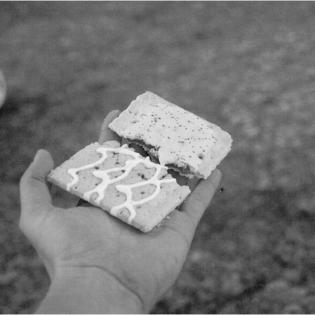Healthy Classroom Community
Students define community and recognize that a class or after-school group is a community because the members share interests and goals and work together. Focus Questions: What is a community and what is my role? What is health and why is it important?
Learners will:
- define community, cooperate, and pledge.
- work together and explain the benefits of working together.
- make a pledge to act responsibly in their community and share their pledges with others.
- explain the importance of rules and name other traits of a healthy community
- Internet access to play YouTube
- one copy for each child of My Classroom Community Pledge (Handout)
- community: a group of people who share interests and goals and work together
- health: the state of being in sound body, mind, and spirit
- cooperate: working together toward a common goal
- pledge: (n) a promise
- respect: (n) high or special regard
For homework, have children ask all their family members to name their favorite healthy foods. The children write each family member's name and write or draw his or her favorite food. When children bring this to school, post the words and pictures on a bulletin board with the headline, "Eat a Variety of Healthy Foods."
Sharing — Encourage volunteers to share their pledge pictures and read their sentences to the group. Reinforce positive behaviors as children listen to their classmates. Several times during the sharing, ask the children to reflect on how these actions help their community work together. Display Pledges in the classroom.
Instructions
Anticipatory Set
Play a brief video about what makes up community: https://www.youtube.com/watch?v=Gv2gamsvMcE Discuss the different parts of community named in the video.
Define a community as “a group of people who share interests and goals and work together.” Ask the children to name some communities, such as the name of your town. Tell them that their [school or after school] group forms a community too because they work together and share interests and goals.
Ask: What is a word that means “work together”? If they don’t name the word cooperate, begin saying it, syllable by syllable, until a child calls out the whole word (co-op-er-ate).
Tell the students to use their best cooperation skills without using any words to line up in order from shortest to tallest. Give a couple rules to begin to promote success. After 5 minutes, ask the students how it went. What made it go well and what was difficult?
Ask the following reflection questions:
- What was the goal of this game? (To have everyone in line in order using cooperation and respect.)
- How did the whole group cooperate to play the game? (Everyone paid attention, communicated kindly, and followed the rules.)
Review classroom procedures for quieting down. Examples may include raising a hand, ringing a bell, clapping a pattern for children to repeat, or call and response (“One…two…three…eyes on me, One…two…eyes on you.” or “Are you ready? Yes I’m ready!”).
Review other classroom rules, such as raising hands to speak and listening to others when they speak. List classroom rules on the board or chart paper (or review posted rules). For each rule, ask children to tell how the rule helps the classroom community run smoothly.
Tell them that each member of the community has a responsibility to follow the rules for the good of the group. Ask them why they think it is important for everyone to do their part. Discuss.
Introduce the concept of a pledge. Tell children that a pledge is a promise to do something. Review or remind children that the Pledge of Allegiance is their promise to be good citizens.
Distribute My Classroom Community Pledge. Read the pledge with children. Have each child give an example of how they can help the community. They may name ways they follow the rules, help others, or act respectfully in the classroom.
Each child writes his or her name on the line and draws a picture of himself or herself acting as a responsible member of the classroom community. Circulate around the room to help them write sentence captions for their pictures.
Allow time for students to share their pledges. Talk about a healthy community that is good for all.
Display the pledges so others may learn about responsible community actions.
The children brainstorm ways to teach others about healthy choices for building personal health. They may find creative places and ways to advocate for and educate about healthy choices.
Handouts
Philanthropy Framework
-
Strand PHIL.I Definitions of Philanthropy
-
Standard DP 02. Roles of Government, Business, and Philanthropy
-
Benchmark E.3 Identify ways that trust is important in all communities.
-
-
-
Strand PHIL.II Philanthropy and Civil Society
-
Standard PCS 01. Self, citizenship, and society
-
Benchmark E.1 Define the word <em>trust</em> and its role in all communities.
-
Benchmark E.3 Describe a benefit of group cooperation.
-
Benchmark E.4 Describe the characteristics of someone who helps others.
-
-
Standard PCS 05. Philanthropy and Government
-
Benchmark E.1 Define community as the degree that people come together for the common good.
-
Benchmark E.2 Identify why rules are important and how not all behaviors are addressed by rules.
-
-
